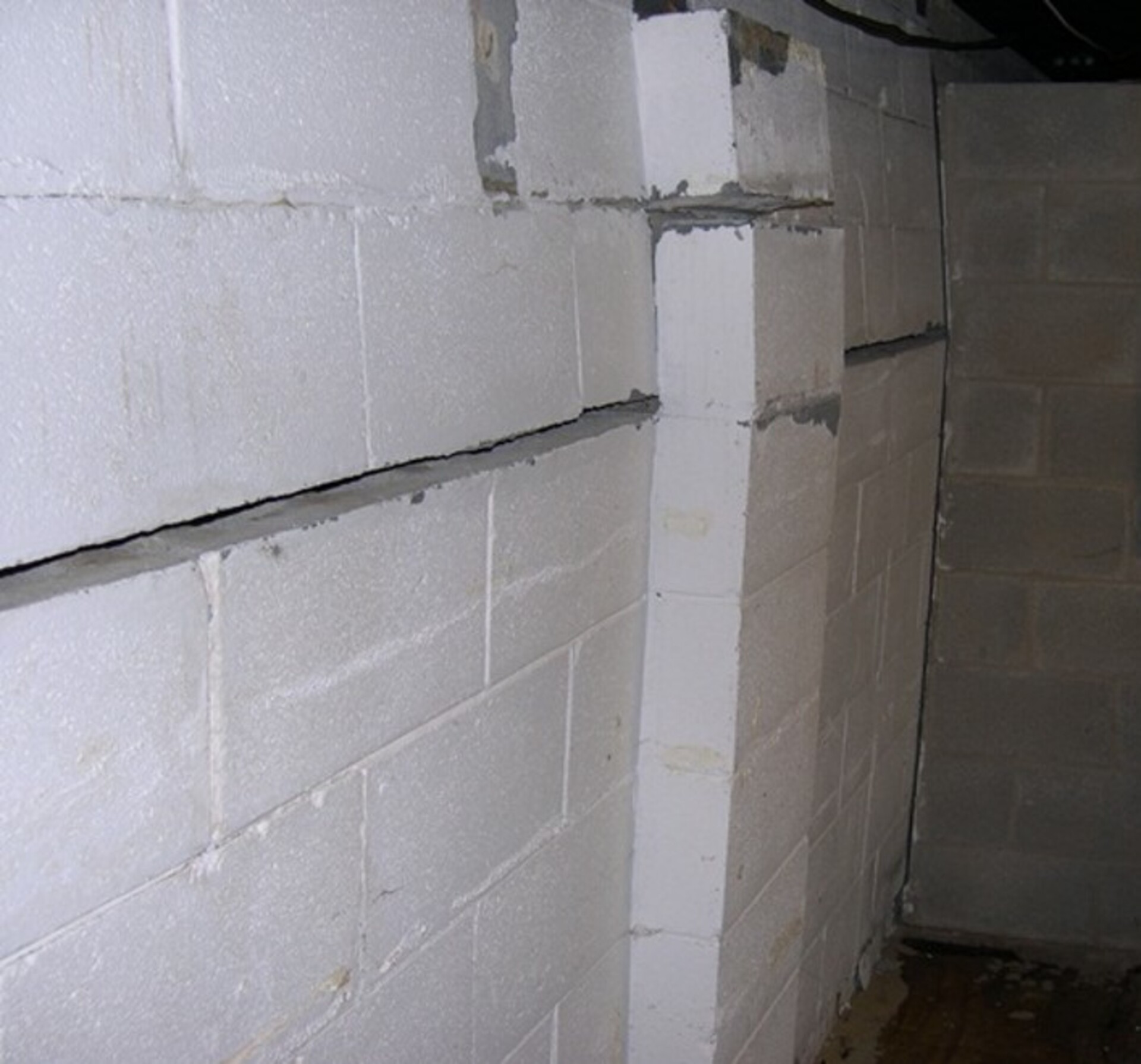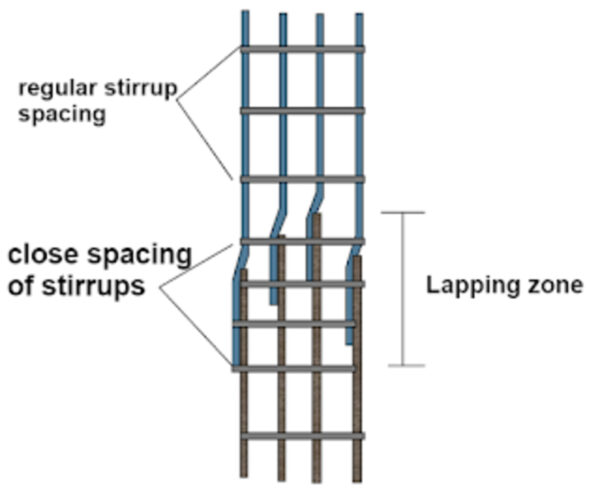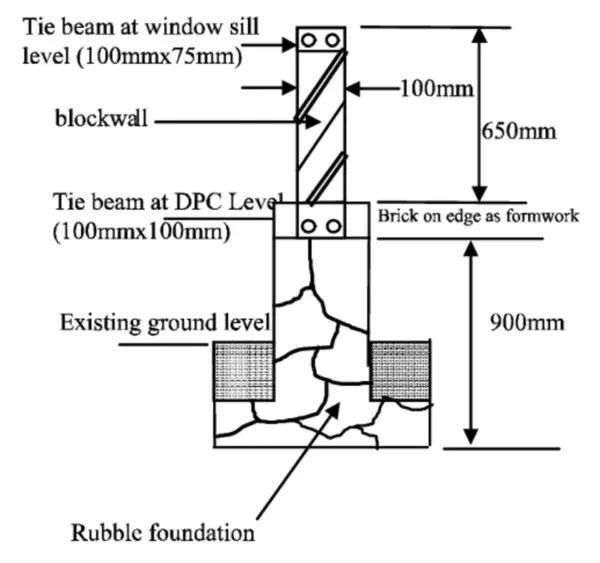Foundation failure refers to cases where the foundation system of a building or structure is unable to safely support the load demands placed upon it. This results in substantial settlement, movement, or even collapse of the structure accompanied by visible cracks and damage.
Foundation failures are complex, multi-factorial phenomena that can result from a multitude of geological, design, construction, and external factors. This comprehensive guide examines various facets including the main causes, failure modes, warning signs, methods for investigation, repairs, and prevention strategies. Legal implications are also discussed.
Foundation failure is a critical issue that can lead to severe consequences. A foundation issue can compromise the stability and safety of an entire structure, making it crucial to understand the causes of failure of foundation and take appropriate remedial measures. One of the most likely failure for a footing is settlement, which occurs when the soil beneath the foundation is unable to support the load of the structure. Other types of failure in foundation include sliding, overturning, and bearing capacity failure.
What is Foundation Failure?
A foundation is the base of a structure that transfers loads from the building
safely into the underlying soil or bedrock. It provides stability, avoids excessive settlement, and resists failure from overturning, sliding, heave, or bearing capacity exceedance.
Foundation failure refers to a scenario where the foundation soil interaction breaks down so it can no longer safely support the structure. Failure occurs when applied loads exceed the ultimate capacity of the soil and foundation system.
Common Causes of Foundation Failure
To prevent building foundation failure, it is essential to identify what are the causes of foundation failure. Some common causes of foundation failure include poor soil conditions, inadequate site investigation, improper design, and construction errors.
Some of the most prevalent reasons for foundation failure include:
- Inadequate site investigations and improperly estimating bearing capacity
- Errors in soil testing procedures or interpretations
- Weak/loose backfill material or improper compaction
- Aggressive chemical action from soil or groundwater
- Construction defects like thin or uneven foundations
- Exceeding estimated foundation loads from larger structures
- Slope instability issues like slides, erosion, or slumping
Identifying the root causes of foundation damage is key for effective remedial solutions.
Types of Foundation Failures
Here are the five major types of foundation failures and a brief overview of each:
- Bearing Capacity Failure – A bearing capacity failure occurs when the load bearing soil below the foundation cannot sustain the forces applied on it from the building. This can lead to excessive settlement and softening of the soil. It generally occurs due to improperly estimated design loads or soil bearing capacity.
- Settlement Failure – Settlement failure is characterized by significant vertical displacement of the foundation over time. It generally arises due to consolidation of loose cohesionless soil or organic material beneath the foundation. Both uniform and differential (uneven) settlement cause major structural defects.
- Sliding Failure – Sliding failure occurs due to lateral sliding of the foundation or an entire building resting on a slope or slope soil that transitions to a weaker bearing layer. This may be coupled with slope instability or erosion. Lack of anchoring leads to horizontal deformation.
- Erosion Failure – Erosion removes the bearing support from under the foundation causing settlement and slope change. It can arise due to construction activities diverting the flow of water adjacent to foundations as well as severe storms.
- Overturning Failure – Overturning failures manifest due to an excessive destabilizing moment acting on the foundation, triggering rotation. This often occurs in structures with high walls and heavy roofs resting on inadequately dimensioned foundation elements.
Each type of foundation failure poses unique risks and requires customized repair solutions to regain structural stability.
Warning Signs of Foundation Issues
Some potential red flags signaling possible foundation deterioration are:
- Visible cracks in walls, basement, pavement around structure
- Doors/windows are stuck or have gaps from shifted frames
- Walls bulge or floors slope indicating movement
- Vibrations felt in upper floors when heavy vehicles pass
- Leaking cracks in foundation walls
- Water pooling around foundation after rain
- Mold from chronic dampness

Foundation Failure Case Studies
Here are some notable real-world examples of foundation failures that can be presented as case studies:
- The Leaning Tower of Pisa – One of the most famous foundation failure examples where inadequate soil testing and oversights in design led to the tower tilting almost 5 degrees on weak subsurface soil. Complex remediation efforts were undertaken over decades to stabilize the structure.
- The John Hancock Tower, Boston – Poor foundation bracing coupled with highly reflective windows led to thermal gradients causing foundation movement and severe glass pane cracks requiring expensive repairs.
- The Transocean Winner Oil Rig – This $200 million rig overturned and slid off its barge mountings while being transported due to insufficient stability calculations and sea conditions exceeding design limits. It was a total loss.
- The Katowice Trade Hall Roof Collapse – In 2006, snow accumulation on this exhibition center in Poland led to roof slab collapse resulting in 65 deaths due to the structure’s under-designed foundations and roof.
- The Lotus Riverside Apartment Building – Shanghai’s 11-story Lotus Riverside complex toppled over on its side during construction in 2009 owing to various shortcomings in foundation design and construction practices.

image source:www.structuredfoundation.com
These real-life cases showcase different modes of foundation failure stemming from incorrect soil testing methods, inaccurate estimates of load conditions, coastal environment effects, construction oversights etc. They illustrate the severe safety and economic impacts of foundation failures. Detailed forensic analysis provides invaluable insights.
Repairing Foundation Failures
Here are some of the key methods for repairing foundation failures:
- Underpinning – This involves installing new foundation elements such as piers, piles or footings that extend deeper than the original foundation to transfer loads to competent strata. Underpinning can be done through hand-dug trenches or foundation pits.
- Piering – Concrete or steel piers are drilled and installed to depths with suitable bearing capacity and used to support the existing foundation. Techniques like helical, chance, and impact driving are used to install the new piers.
- Compaction Grouting – This injects pressurized cement grout to densify and strengthen loose granular soils underneath foundations. The compaction reduces voids and increases bearing capacity.
- Slab Jacking – Also called mud jacking, this levels settled slab foundations by pressure injecting a mud slurry underneath to lift the slab back into position.
- Epoxy Injection – Special structural polymer resins are injected into concrete foundations to seal cracks and bind structural components. This restores integrity.
- Waterproofing Membranes – Water ingress and moisture often lead to varying foundation damage. Installing waterproofing barriers helps prevent erosion and chemical damage.
- Drainage Control – Controlling site drainage through grading or subsurface water collection systems helps prevent erosion and keep foundations dry.

The advantage of these techniques is that they allow restoring foundation capacity and leveling structures without having to dismantle or rebuild. But an accurate diagnosis of failure reasons is essential for long-lasting repairs.
The repair strategy depends on failure type, site access, and budget. Custom engineering analyses are required to develop tailored foundation rehabilitation plans matching the failure mechanism and site specifics.
Preventing Foundation Failures
Here are some key preventive measures that can be taken to avoid foundation failures:
- Conduct thorough geotechnical site investigations – Detailed analysis of soil conditions, water table levels, bedrock depth, shear strengths, consolidation properties, and dynamic loading response is essential for adequate foundation design.
- Adhere to safety code requirements – Design foundations based on IRCC and ACI guidelines for bearing capacity, settlement, sliding resistance, overturning stability and other limit states. Higher safety factors should be used for weaker soils or dynamic loads.
- Allow for drainage, erosion protection and chemical resistance – Protect foundations from moisture ingress, provide adequate site drainage to prevent water accumulation and use coatings to resist chemical damage based on soil composition.
- Employ proper construction quality control (CQC) – Continuous CQC testing and inspection ensures foundation concrete meets strength specifications, reinforcing steel and formwork are installed correctly and backfills are well compacted.
- Carry out pre-construction condition surveys – Documenting the baseline condition of nearby structures provides a reference to identify foundation-related impacts that may occur during excavations and construction.
- Consider potential settlements – Settlement estimations help design utilities, slopes and slabs appropriately to prevent damage from foundation movements.
Following codes and standards along with rigorous construction quality assurance provides a robust safeguard against foundation failures. Advanced monitoring also helps detect problems early.
Legal Implications of Foundation Failures
Because foundation failures pose direct life safety risks and result in expensive structural repairs, severe legal liabilities arise for associated parties like:
- Design Professionals: Engineers/architect duty-of-care violations
- Project Owners: Failure to ensure competent site development
- Contractors: Negligent construction methods leading to defects
Such cases often reach courtroom settlements ranging from several hundred thousand dollars to even multimillion awards requiring extensive expert testimony on root causes, warnings possibly missed, forensic engineering investigation findings, and determination of accountable parties.
Foundation Failure Investigation Experts
Specially qualified structural forensic engineers investigate foundation damage incidents to uncover root causes. They employ advanced analysis techniques as well as sophisticated site measurement technologies like ground penetrating radar.
Through detailed failure hypothesis modeling and review of all building plans, tests, specifications, and construction records – plausible explanations are deduced. These experts provide technical insights for legal proceedings and repair recommendations.
Conclusion
Foundation failures lead to substantial structural instability and cause extensive repairs, costs, litigation, and safety risks. A multitude of geological, design, construction and external factors can trigger foundation problems.
Understanding what are the causes of failure of foundation is the first step in preventing failure of foundation. By conducting thorough site investigations, selecting appropriate foundation types, and following proper design and construction practices, civil engineers can mitigate the risk of foundation failure.
Regular maintenance and monitoring of foundations are also crucial to identifying and addressing any potential issues before they lead to significant causes of failure of foundation. By staying vigilant and proactive, civil engineers can ensure the longevity and safety of the structures they build.
Understanding the types of failures, causes, warning signs, investigation techniques, remedial solutions and prevention strategies allows civil engineers to avoid common pitfalls and ensure structural integrity. Careful geotechnical studies, conservative designs, and quality construction guided by building codes and expert structural forensic assessments help minimize foundation failure incidence.







